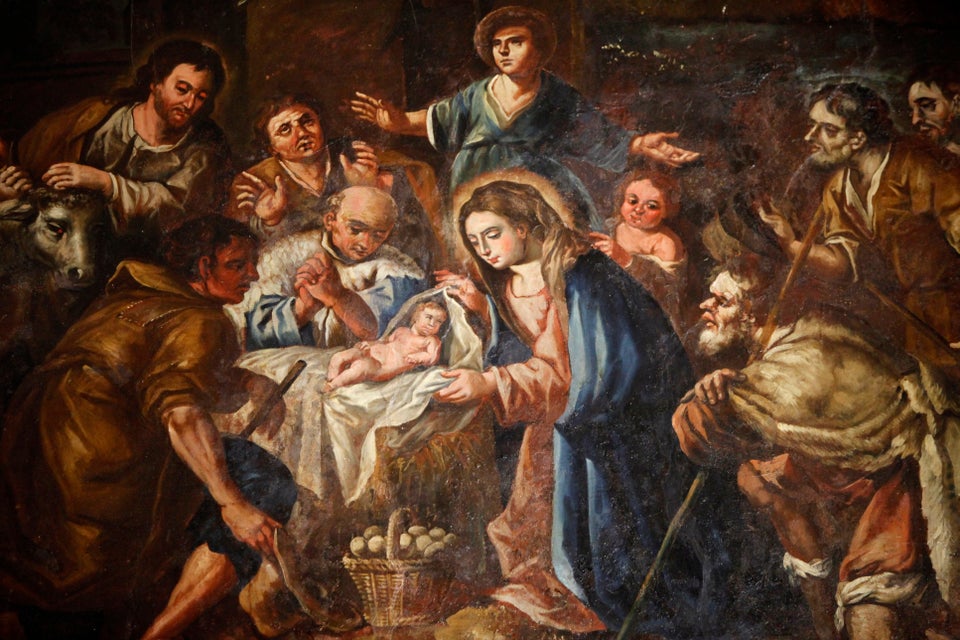It’s easy to get lost in the presents and eggnog and endless mind-numbing Christmas carols. But the truth is, Christmas has only recently become the massive, consumer holiday it is today.
Modern Christmas traditions evolved over centuries, slowly taking hold in both Christian and secular homes around the globe. But there was a time when early Christians didn’t celebrate birthdays at all, let alone Christ’s, believing birth celebrations to be little more than “pagan” practices. Clearly, there’s a lot we don’t really know, or have forgotten, about how the modern Christmas came to be.
Scroll down to learn seven surprising facts about Christmas history and traditions:
The first recorded Christmas celebration wasn't until 336 A.D.

Godong / robertharding via Getty Images
For the first 300 years of Christianity, the church did not have a feast day set aside to celebrate Jesus's birth. It wasn't until 336 A.D. that December 25 first showed up in records as a holiday commemorating its founder's birthday, listed in a Roman almanac on Christian bishops and martyrs.
It's unclear why we celebrate Christmas on December 25.

sot via Getty Images
Christmas celebrates the nativity story, but the Bible makes no reference to Jesus being born in December. If anything, scholars believe it's more likely Jesus was born sometime in the spring (Luke’s gospel suggests there were shepherds in the field on the first Christmas, which wouldn't have been likely in the dead of winter.) Some believe December 25 turned up as a Christian alternative to the Roman pagan celebrations of midwinter, which occurred in late December. Others think the day may have been derived from "a calculation based on an assumed date of crucifixion of April 6 coupled with the ancient belief that prophets died on the same day as their conception," according to Religion Facts.
Some Orthodox churches celebrate Christmas in January.

Spencer Platt via Getty Images
Some Orthodox churches, including the Russian and Greek Orthodox and Armenian Apostolic Church, celebrate Christ's birth on January 6 and 7. These churches use the Julian calendar -- rather than the Gregorian calendar, which most of the rest of the world uses -- which accounts for the 13-day discrepancy between the two Christmas dates.
Advertisement
The Puritans despised Christmas.

ZU_09 via Getty Images
The American pilgrims followed in the footsteps of Oliver Cromwell, who took over England in 1645 and worked to ban Christmas in an effort to weed out decadent traditions. The pilgrims similarly looked down on Christmas as an indulgent British custom and outlawed it in some places. In England, Christmas once more became widely celebrated after the monarchy was reinstated in 1660. But it wasn’t declared a federal holiday in the U.S. until June 26, 1870.
The Christmas tree tradition emerged in the 16th century.

RichVintage via Getty Images
Roman pagans had long decorated their homes with evergreen boughs to represent the cycle of life that persists beyond the cold winter months. Whether that traditions carried over into early Christian homes is unclear. But by the 1500s, the evergreen tree had emerged as a symbol of Christmas in Latvia and Strasbourg, according to Christianity Today. Some sources also cite Germany as an original home to the Christmas tree. The tradition spread to the American colonies in the late 18th century with the arrival of European immigrants, but most Americans considered the decoration to be a pagan symbol until much later.
St. Francis invented the nativity scene centuries after Jesus's birth.

Richard Nebesky via Getty Images
St. Francis of Assisi is credited with staging the first nativity scene in 1223. According to a biography of the saint written in 1263, St. Francis set up a manger complete with hay and two live animals in a cave in the Italian village of Grecio. He then invited villagers to visit the installation as he preached about “the babe of Bethlehem.” Nativity scenes, or crèches, eventually spread throughout Europe and the rest of the world and can be found in many churches and homes around Christmastime.
Advertisement
Writing "Xmas" is actually theologically sound.

amanaimagesRF via Getty Images
The Associated Press advises against using the abbreviation "Xmas" when writing about Christmas, but doing so is actually perfectly acceptable, theologically speaking. The Greek letter X, or Chi, is the first letter of "Christ" and served as a stand-in for Jesus's name dating back to at least 1100. In 1551, Christmas was known as "Xtemmas," and eventually it was shortened to "Xmas."
